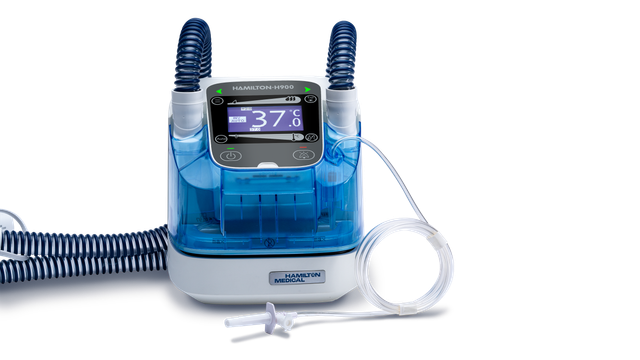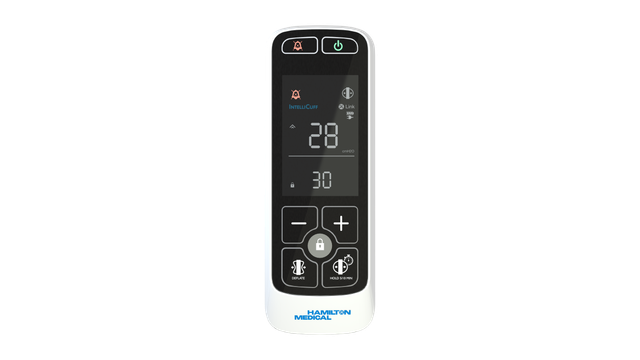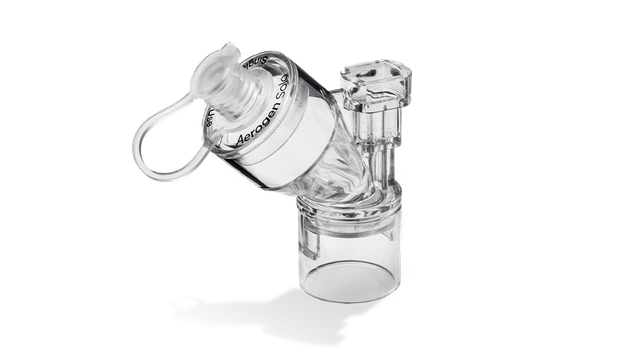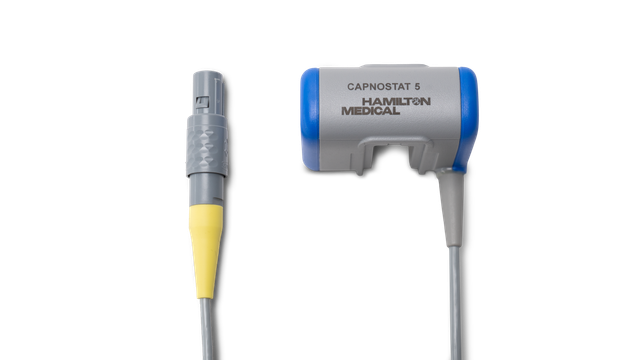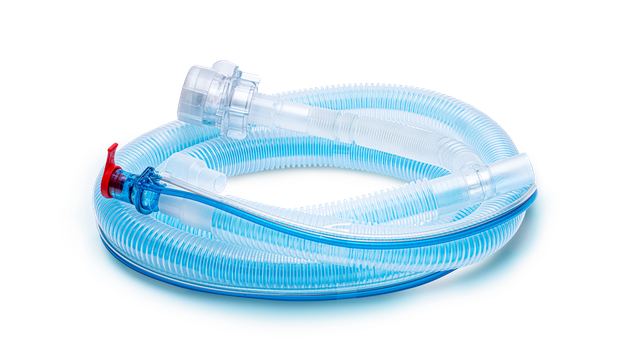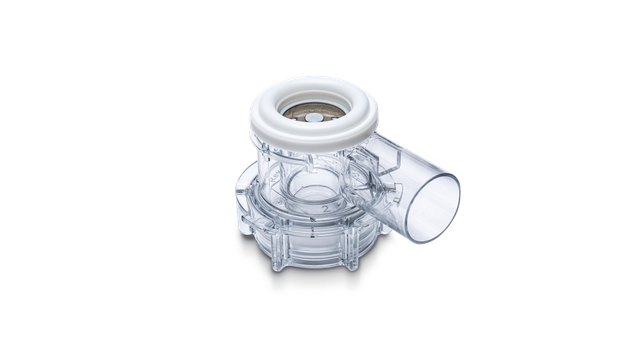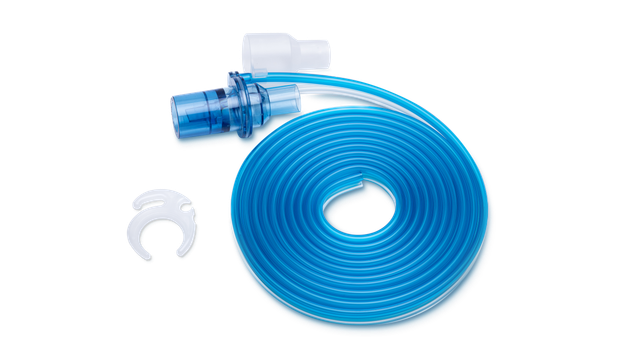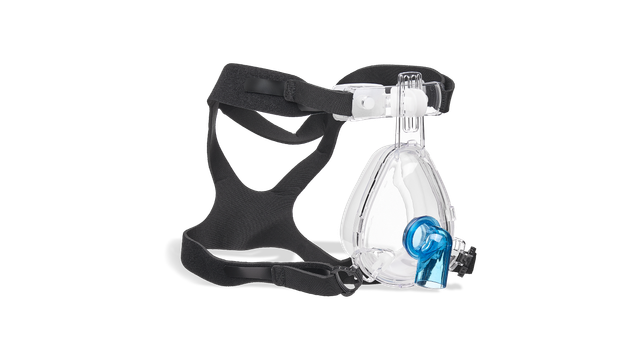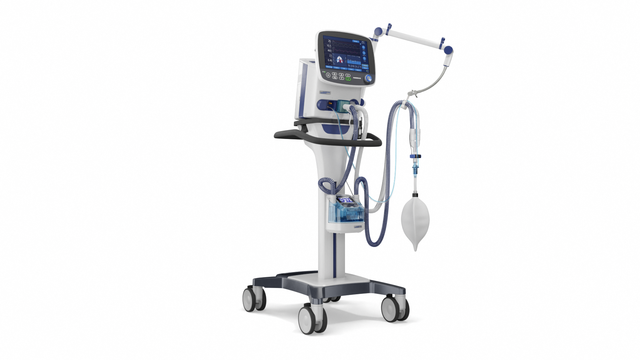
Compétence compacte. Le ventilateur mobile haut de gamme

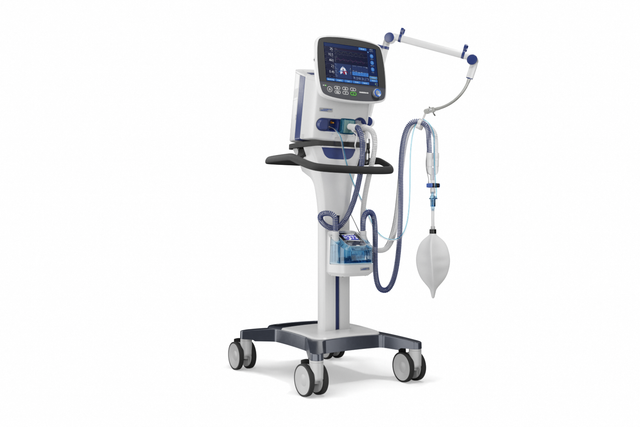
Compétence compacte. Le ventilateur mobile haut de gamme
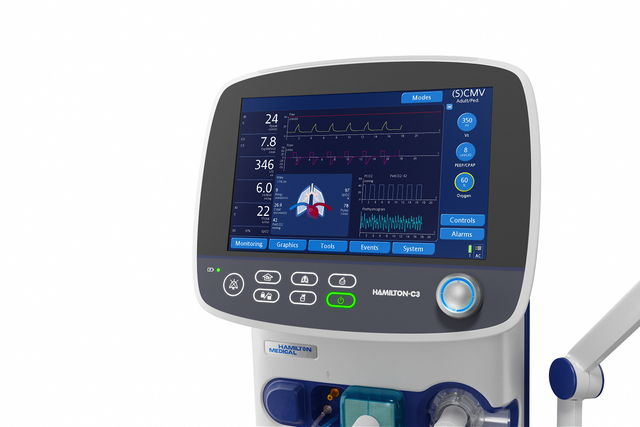
Sur grand écran. Les données de ventilation importantes en un coup d'œil
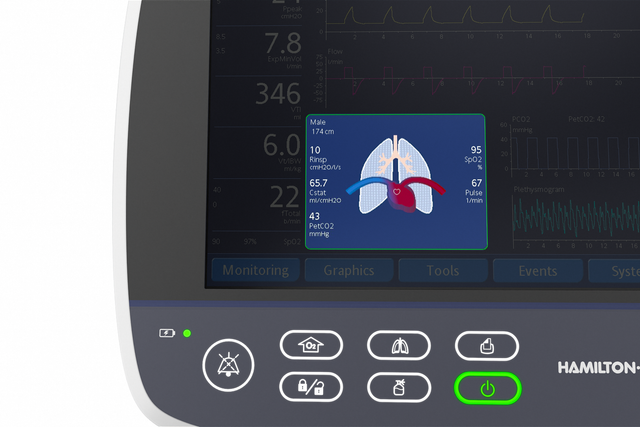
Mieux qu'un long discours. Visualisation de la mécanique respiratoire
Le panneau Poumon dynamique affiche la compliance pulmonaire, la résistance des voies aériennes et le déclenchement par le patient en synchronie avec les cycles réels.
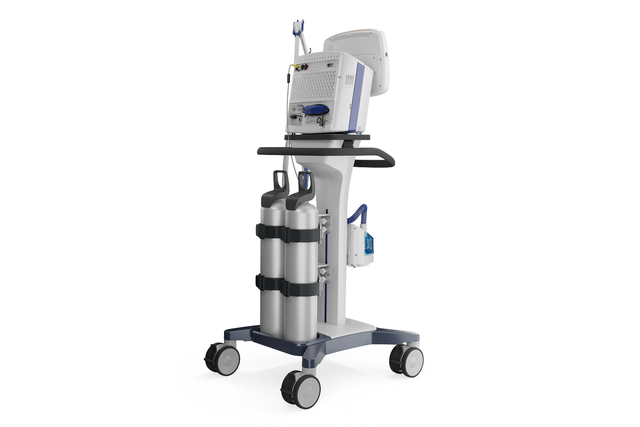
Totalement indépendant. Pas besoin d'air comprimé et fonctionnement sur batterie
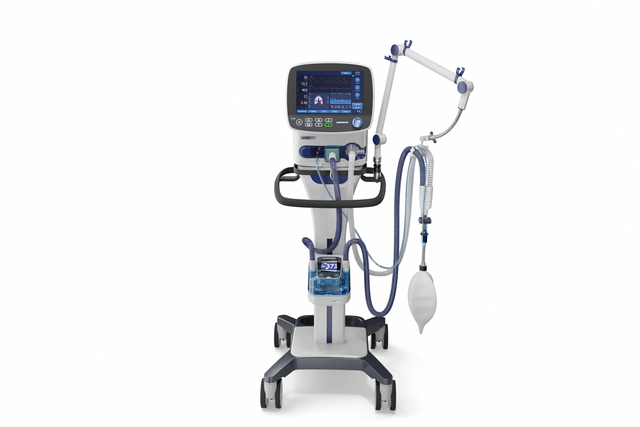
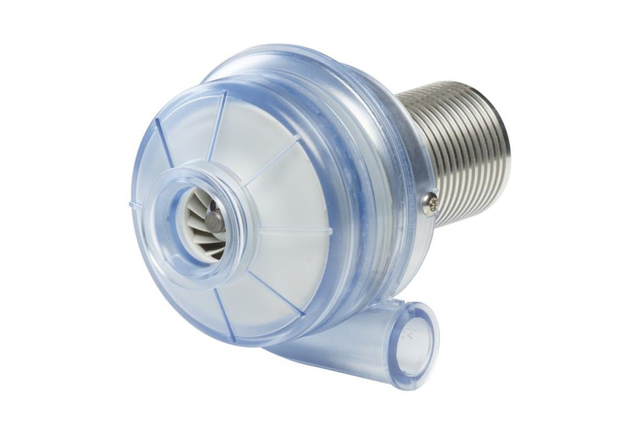
Partout où vous avez besoin de moi. Une turbine pour plus de flexibilité
Grâce à sa puissante turbine, le HAMILTON‑C3 est entièrement indépendant d'une sortie d'alimentation en air à haute pression et de compresseurs externes. Vous disposez ainsi d'un maximum de mobilité pour vous déplacer librement dans l'hôpital.
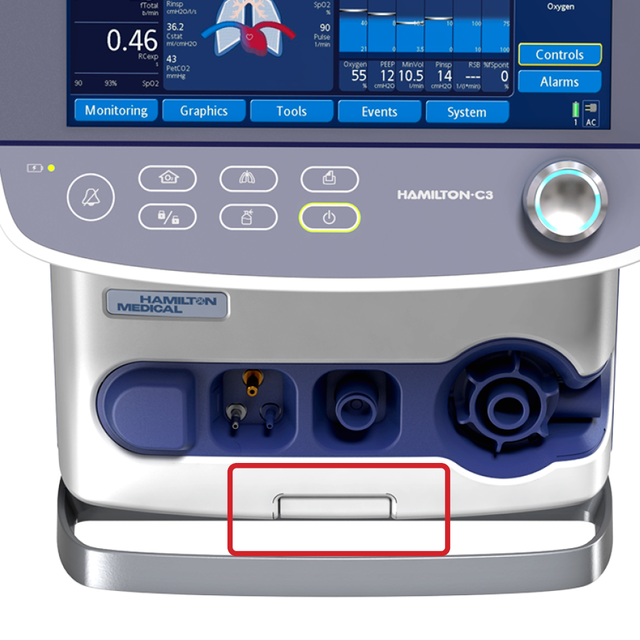
Partout où vous me posez. Sur simple pression d'un bouton
Vous pouvez facilement fixer le HAMILTON‑C3 sur un chariot, un support de lit ou une étagère. Vous n'avez pas besoin d'outils.
Il vous suffit d'appuyer sur un bouton pour déverrouiller le ventilateur du chariot et de le refixer en un seul clic.
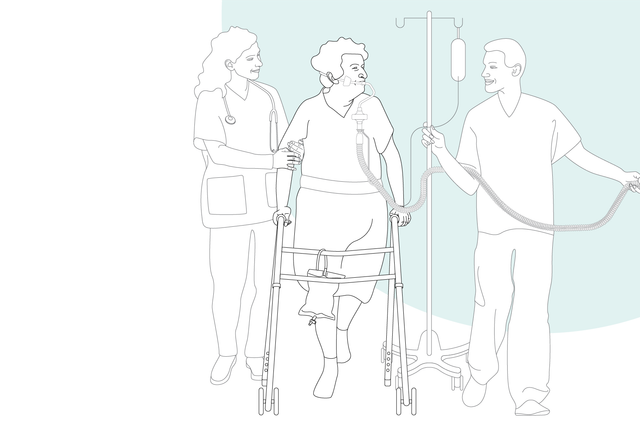
Le plus tôt sera le mieux. Une mobilisation accélérée
Grâce à sa turbine haute performance, sa batterie, sa taille compacte et ses modes de ventilation à la pointe de la technologie, le HAMILTON‑C3 accompagne également votre patient dans ses premiers pas hors de son lit.
Vous voulez en savoir plus ?
Découvrir le modèle 3D
Découvrez le HAMILTON‑C3 sous chaque angle et cliquez sur les zones réactives pour en savoir plus.
Pour des informations rapides
- Standard
- Option
- Non disponible
| Groupes de patients | Adulte/Enf., Néonatal |
|---|---|
| Dimensions (L × P × H) | 310 x 250 x 460 mm (unité de ventilation) 560 x 640 x 1460 mm (chariot inclus) |
| Poids | Unité de ventilation : 9,5 kg Unité de ventilation et chariot : 37 kg |
| Taille et résolution du moniteur | Diagonale 12,1 po (307,3 mm) 1280 x 800 pixels |
| Moniteur amovible | |
| Durée de fonctionnement de la batterie | 2,4 h avec une batterie 5 h avec deux batteries |
| Batterie remplaçable à chaud | |
| Alimentation en air | Turbine intégrée |
| Connecteur O2 | DISS (CGA 1240) ou NIST |
| Connectivité | Port COM, Appel infirmière (en option) |
| Volume | 43 dB en fonctionnement normal |
| Volume contrôlé, débit contrôlé | |
|---|---|
| Volume ciblé, pression adaptative contrôlée | |
| Ventilation intelligente | ASV®, INTELLiVENT‑ASV® (option) |
| Ventilation non invasive | |
| Débit haut | |
| Visualisation de la mécanique pulmonaire (Poumon dynamique) | |
|---|---|
| Visualisation de la dépendance du patient au ventilateur | |
| Mesure de la pression œsophagienne | |
| Capnographie | |
| Monitorage de la SpO2 |
| Évaluation de la capacité de recrutement et recrutement pulmonaire (P/V Tool Pro) | |
|---|---|
| Synchronisation patient/ventilateur (IntelliSync+) | |
| Ventilation RCP | |
| Module Hamilton Connect |
| Connexion à distance à l’humidificateur HAMILTON‑H900 | |
|---|---|
| Contrôleur de pression du ballonnet IntelliCuff intégré | |
| Nébuliseur pneumatique intégré | |
| Nébuliseur Aerogen intégré | |
| Compatibilité avec le système d’administration d’anesthésiques Sedaconda ACD‑S |
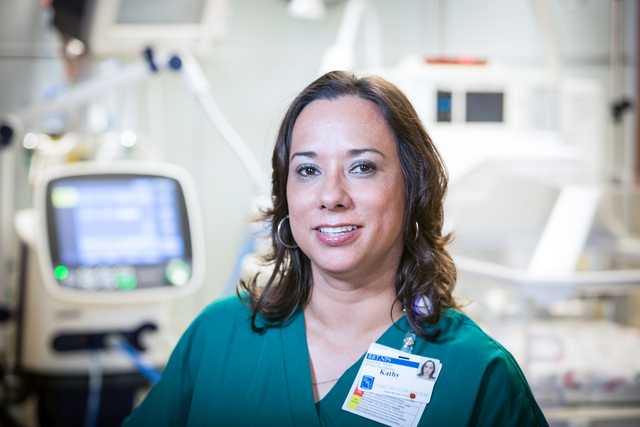
Témoignages de clients
Le HAMILTON‑C3 est un ventilateur entièrement transportable. Les patients fragiles qui sont emmenés en salle d'opération peuvent rester reliés au même ventilateur tout au long du processus.
Kathy Lira
Coordinatrice de la formation en pédiatrie/néonatologie
University Medical Center, Lubbock (Texas), États‑Unis
Pour vos patients
Les solutions de ventilation intelligente en un coup d'œil
ASV® ‑ Adaptive Support Ventilation®. Pour une adaptation 24 heures sur 24
Le mode de ventilation à aide adaptative (ASV) ajuste en continu la fréquence respiratoire, le volume courant et le temps inspiratoire à chaque cycle en fonction de la mécanique et de l'activité respiratoires du patient, 24 heures sur 24, de l'intubation à l'extubation.
INTELLiVENT®‑ASV. Pour une assistance au chevet du patient
Le mode de ventilation intelligente INTELLiVENT‑ASV contrôle en continu la ventilation et l'oxygénation du patient.
Il règle la ventilation minute, la PEP et l'oxygène en fonction des cibles définies par le médecin et des paramètres physiologiques du patient.
P/V Tool®. Pour l'évaluation et le recrutement pulmonaire
Vous pouvez utiliser la fonction P/V Tool pour évaluer la capacité de recrutement pulmonaire et déterminer la stratégie de recrutement à appliquer.
En outre, vous pouvez l'utiliser pour réaliser une manœuvre de recrutement par maintien de l'inspiration et mesurer l'augmentation du volume pulmonaire.
Nébuliseur intégré. Pour des traitements supplémentaires
Le nébuliseur pneumatique intégré est entièrement synchronisé avec les cycles d'inspiration et d'expiration.
Un nébuliseur Aerogen intégré et synchronisé est disponible en option (
L'administration d'une fine brume de particules de médicaments par aérosol permet d'inverser le bronchospasme, d'améliorer l'efficacité de la ventilation et de réduire l'hypercapnie chronique (
Thérapie à haut débit par canule nasale. Pour les inconditionnels d'O2
La thérapie à haut débit par canule nasale (
Capnographie volumétrique. Pour les CO2ntrol freaks
La mesure du débit proximal et du CO2 permet à nos ventilateurs de réaliser une capnographie volumétrique à la pointe de la technologie. Ces données constituent une référence importante pour évaluer la qualité de la ventilation et l'activité métabolique.
Panneau État Vent. Pour ceux qui sont prêts au sevrage
Le panneau État Vent affiche six paramètres relatifs à la dépendance du patient au ventilateur, notamment l’oxygénation, l’élimination du CO2 et l’activité du patient.
Une réglette variable, mobile de haut en bas dans chaque colonne, représente la valeur actuelle pour un paramètre donné.
Sevrage rapide. Pour les esprits indépendants
L'option Sevrage rapid. est une fonctionnalité du mode l'INTELLiVENT‑ASV qui garantit un monitorage dynamique continu et contrôle les critères patient pour évaluer la possibilité de procéder à l'extubation du patient.
EVS automatiques. Pour les plus spontanés
Les épreuves de ventilation spontanée (EVS) automatiques font partie de la fonction Sevrage rapid. du mode INTELLiVENT‑ASV et vous permettent de procéder à des EVS totalement contrôlées.
Panneau Poumon dynamique. Pour ceux qui aiment voir les choses
Le panneau Poumon dynamique vous montre une représentation graphique en temps réel des données de monitorage importantes suivantes :
- Compliance et résistance
- Déclenchement par le patient
- SpO2
- Fréquence de pouls
Boucles et tendances configurables. Pour les statisticiens
Le ventilateur peut afficher une boucle dynamique fondée sur une combinaison de paramètres monitorés sélectionnés. Grâce à la fonction de tendance, vous pouvez voir les informations de tendance affichées pour les paramètres de monitorage et la plage de temps de votre choix.
Le dispositif mémorise en continu les paramètres monitorés, même en mode de veille.
Oxymétrie de pouls. Pour les passionnés de la SpO2
L'option SpO2 offre une mesure de SpO2 intégrée non invasive avec les données affichées sur votre ventilateur.
Nous proposons également une gamme complète de capteurs de SpO2.
Ventilation non invasive haute performance. Pour les porteurs de masque
Les modes de ventilation non invasive délivrent des cycles spontanés avec aide inspiratoire, cyclés en débit (mode VNI et VNI‑Fmin) et des cycles contrôlés par cycles de temps, à pression contrôlée (VNI‑Fmin).
Par rapport aux ventilateurs utilisant de l'air comprimé, nos ventilateurs à turbine sont capables de fournir des débits de pointe plus élevés. Cela garantit des performances optimales même en cas de fuites importantes.
Modes nCPAP. Pour les tout‑petits
Les modes nCPAP sont conçus de manière à paramétrer uniquement la pression CPAP souhaitée. Le débit est ensuite ajusté en fonction de l'état du patient et des éventuelles fuites. Cela évite des pressions de pointe involontaires, garantit une compensation des fuites très efficace et permet de réduire la consommation d'oxygène. L'ajustement du débit se fait très rapidement grâce à la sensibilité élevée de la mesure de pression.
Pour vous
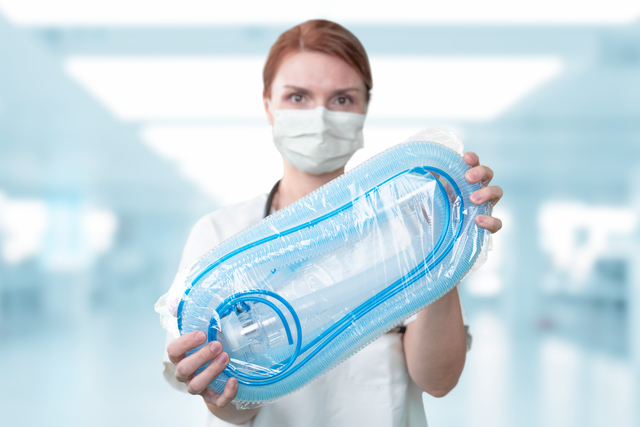
Pré‑assemblés. Et prêts à l'emploi
Nos kits de circuit respiratoire pré‑assemblés incluent les consommables essentiels au fonctionnement du ventilateur et sont livrés en un seul emballage pratique.
Tous nos consommables essentiels sont spécialement conçus pour les ventilateurs Hamilton Medical avec une qualité garantie par le fabricant.

Moins de manipulations de boutons. Plus d'ajustements pour vos patients
Pour gérer la ventilation, vous devez généralement définir plusieurs paramètres, comme la pression, le volume, les déclenchements expiratoire et inspiratoire, la pression du ballonnet, et bien plus encore. Et chaque fois que l'état de santé de votre patient change, vous devez effectuer un voire plusieurs réajustements.
Pour simplifier ce processus et diminuer le nombre de manipulations de boutons, nous avons développé plusieurs solutions :
L'ASV (ventilation à aide adaptative) est un mode de ventilation qui adapte en continu la fréquence respiratoire, le volume courant et le temps inspiratoire en fonction de la mécanique et de l'activité respiratoires du patient. Il a été montré que l'ASV réduisait la durée de la ventilation mécanique dans plusieurs populations de patients avec moins de réglages manuels (
Notre mode de ventilation intelligente INTELLiVENT‑ASV vous permet de passer du rôle de manipulateur de boutons à celui de superviseur, réduit le nombre d'interventions manuelles sur le ventilateur (
Les solutions classiques de gestion de pression du ballonnet exigent de surveiller et d'ajuster manuellement la pression du ballonnet.
Le dispositif IntelliCuff sécurise les voies aériennes de votre patient (
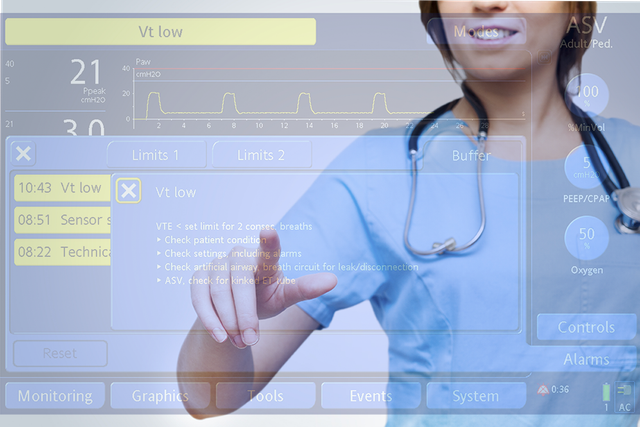
Une aide à disposition ! Dépannage à l'écran
En cas de problème, le ventilateur déclenche une alarme signalée par la zone lumineuse d'alarme, une tonalité et l'affichage d'un message à l'écran.
L'aide en ligne vous propose des options pour résoudre l'alarme.

Adieu ventilateur ! Outils de mise en œuvre de vos protocoles de sevrage
Nous souhaitons que votre patient se débarrasse le plus vite possible de notre ventilateur. C'est pourquoi nous vous fournissons les outils vous permettant de mettre en œuvre votre protocole de sevrage.
Cela inclut des aides visuelles et des modes de ventilation conçus pour favoriser la respiration spontanée.
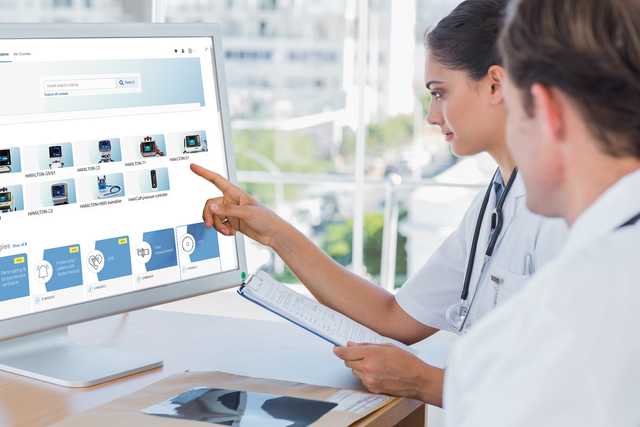
Prenez le contrôle ! Parcours d'apprentissage et contenu de formation
Notre Academy en ligne offre des parcours d'apprentissage simples à suivre pour vous familiariser le plus rapidement possible avec les produits et les technologies Hamilton Medical.
Pour le futur

Une évolution constante. Développement des capacités de votre ventilateur
Nous travaillons constamment au développement de nos produits. De nouvelles fonctionnalités sont ajoutées et des fonctionnalités existantes sont améliorées pour s'assurer que vous ayez toujours accès à la dernière technologie de ventilation tout au long de la durée de vie de votre ventilateur.


Maîtrisez‑en un, vous les maîtriserez tous. Une interface utilisateur universelle
L'interface utilisateur fonctionne de la même manière sur tous les ventilateurs Hamilton Medical et ce, indépendamment de son utilisation en USI, en salle d'examen IRM ou lors de déplacements.
Notre Ventilation Cockpit intègre des données complexes qui sont représentées visuellement de façon intuitive.
Pour une solution complète
Accessoires entièrement intégrés
Nous développons nos accessoires en gardant à l'esprit l'optimisation de la simplicité d'utilisation et de la sécurité du patient. Dès que cela est possible, nous les intégrons à nos ventilateurs pour simplifier le fonctionnement du système complet du ventilateur.
Nos consommables

Parlez à nos experts. Discutons de vos besoins
Notre équipe de spécialistes de la ventilation est heureuse de vous aider à choisir le ventilateur idéal pour votre environnement clinique et à atteindre vos objectifs thérapeutiques. Obtenez un devis personnalisé ou planifiez un rappel pour plus d'informations.
Pour plus d'informations
HAMILTON‑C3 le ventilateur haut de gamme compact ‑ brochure
HAMILTON‑C3 Caractéristiques techniques
Transport and storage solutions for the HAMILTON‑C2/C3
Hamilton Medical Une solution pour toutes les situations
Références
- 1. Kirakli C, Naz I, Ediboglu O, Tatar D, Budak A, Tellioglu E. A randomized controlled trial comparing the ventilation duration between adaptive support ventilation and pressure assist/control ventilation in medical patients in the ICU. Chest. 2015;147(6):1503‑1509. doi:10.1378/chest.14‑2599
- 2. Tam MK, Wong WT, Gomersall CD, et al. A randomized controlled trial of 2 protocols for weaning cardiac surgical patients receiving adaptive support ventilation. J Crit Care. 2016;33:163‑168. doi:10.1016/j.jcrc.2016.01.018
- 3. Zhu F, Gomersall CD, Ng SK, Underwood MJ, Lee A. A randomized controlled trial of adaptive support ventilation mode to wean patients after fast‑track cardiac valvular surgery. Anesthesiology. 2015;122(4):832‑840. doi:10.1097/ALN.0000000000000589
- 4. Beijers AJ, Roos AN, Bindels AJ. Fully automated closed‑loop ventilation is safe and effective in post‑cardiac surgery patients. Intensive Care Med. 2014;40(5):752‑753. doi:10.1007/s00134‑014‑3234‑7
- 5. Bialais E, Wittebole X, Vignaux L, et al. Closed‑loop ventilation mode (IntelliVent®‑ASV) in intensive care unit: a randomized trial. Minerva Anestesiol. 2016;82(6):657‑668.
- 6. Fot EV, Izotova NN, Yudina AS, Smetkin AA, Kuzkov VV, Kirov MY. Automated Weaning from Mechanical Ventilation after Off‑Pump Coronary Artery Bypass Grafting. Front Med (Lausanne). 2017;4:31. Published 2017 Mar 21. doi:10.3389/fmed.2017.00031
- 7. Arnal JM, Saoli M, Garnero A. Airway and transpulmonary driving pressures and mechanical powers selected by INTELLiVENT‑ASV in passive, mechanically ventilated ICU patients. Heart Lung. 2020;49(4):427‑434. doi:10.1016/j.hrtlng.2019.11.001
- 8. Chenelle CT, Oto J, Sulemanji D, Fisher DF, Kacmarek RM. Evaluation of an automated endotracheal tube cuff controller during simulated mechanical ventilation. Respir Care. 2015;60(2):183‑190. doi:10.4187/respcare.03387
- 100. Dhand R. New frontiers in aerosol delivery during mechanical ventilation. Respir Care. 2004;49(6):666‑677.
- 101. Waldrep JC, Dhand R. Advanced nebulizer designs employing vibrating mesh/aperture plate technologies for aerosol generation. Curr Drug Deliv. 2008;5(2):114‑119. doi:10.2174/156720108783954815
Notes en bas de page
- a. Non commercialisé dans certains pays
- b. Uniquement disponible pour HAMILTON‑C6/G5/S1
- f. Également appelée thérapie d'oxygène à haut débit. Cette terminologie peut être utilisée de façon interchangeable avec la thérapie à haut débit par canule nasale.


